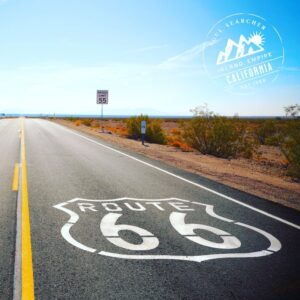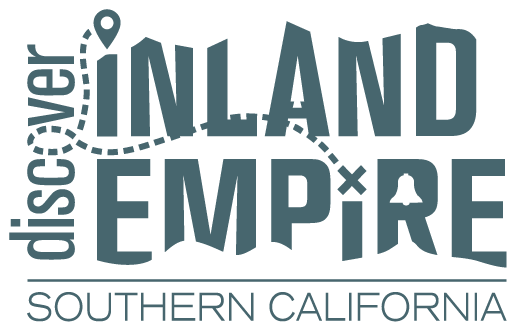
Designed to connect the American Midwest to the shining shores of the Pacific Ocean “from sea to shining sea”, U.S. Route 66 was one of the original highways within the U.S. Highway System and remains a symbol of Americana today. Established in 1926, this historic road played an integral role in American history throughout the Great Depression, when it carried families escaping the Dust Bowl to California, and during the Post-War Era, when Americans started to enjoy modern driving vacations, spurring the era of “Get Your Kicks on Route 66.”
Today, the legendary highway connects travelers to many quirky Inland Empire attractions like Park Moabi, the Amboy Crater, Emma Jean’s Holland Burger Cafe, Madonna of the Trail, the Giant Coffee Cup and more.
History buffs can delve deeper into the highway’s background at one of the county’s two Route 66 museums, the California Route 66 Museum in Victorville and the Route 66 “Mother Road” Museum in Barstow
Secrets of 66 Revealed
Route 66 is loved world-wide.
The section of Route 66 between Needles and Barstow is very popular with motorcyclists due to its beautiful desert scenery and wide expanses of open roadway.
It is little changed since the heyday of Route 66 and provides a unique opportunity to experience the Mother Road as it was.
Something folks might not know: Route 66 was a major transportation corridor during WWII transporting troops and supplies to General George Patton’s Desert Training Center. Vestiges of the DTC remain along Route 66 in the Mojave Desert.
Route 66 has been celebrated through a television series, a Pixar animated film (CARS), neon signs, famous literature (The Grapes of Wrath) and music. “Get Your Kicks on Route 66” has been recorded by over 100 artists. It is easy to follow Route 66 in San Bernardino County. Look for the blue and yellow “acorn” 66 signs between Needles and Victorville and road stencils along the roadway. You can follow Route 66 along Mt. Vernon Ave. in San Bernardino and then Foothill Blvd through Fontana, Rancho Cucamonga and Upland. Take time to meet the people along the way. Route 66 is a “linear community” stretching 2,448 miles – 326 miles in California. The people along Route 66 make it special.
Did you know that the original McDonalds was located in San Bernardino?… the oldest winery in California was along Route 66? … the Sycamore Inn was a stagecoach stop dating back to 1848? Some famous dining, shopping, attractions, sightseeing, historic landmarks, places to stay, etc. in San Bernardino County, along Route 66 are:
- El Garces Harvey House in Needles
- Goff’s Schoolhouse in Goffs
- Iconic Roy’s Café sign in Amboy (featured in many advertisements) and the nearby Amboy Crater
- Casa del Desierto Harvey House in Barstow that houses the Mother Road Route 66 Museum and the Western America Railroad Museum
- California Route 66 Museum and Emma Jean’s Holland Burger in Victorville
- One of only 3 remaining Wigwam Motels in the entire United States – San Bernardino
- One of the last remaining giant orange juice stands that served parched travelers – Fontana
- Magic Lamp, Sycamore Inn and restored Richfield Station in Rancho Cucamonga
- Madonna of the Trails statue in Upland. Erected in 1929 by the Daughters of the American Revolution to honor the spirit of pioneer women (One of only 12 in the US)
Route 66 through the desert has very little traffic. Make sure that others are aware of your travel plans.
The desert section of Route 66 has a variety of outdoor activities: hiking, rock hounding, off-road vehicle paths, etc.
During most of the year, the weather is perfect for visiting Route 66 in San Bernardino County. Spring is pleasant and wildflowers abound along the desert section. Summer can be very hot – especially in the desert. Be prepared with lots of water. Fall is a wonderful time to travel.
